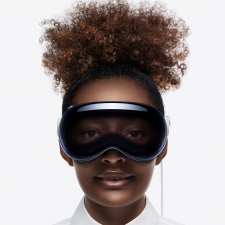Apple has reduced its projected shipment quantity of Vision Pro units for 2024 from 800,000 units to 400-450,000 units.
These figures come from Apple analyst Ming-Chi Kuo who shared that demands have “fallen sharply beyond expectations” just before the VR headset ships outside of the United States.
While the “spatial computing” headset received mixed reviews when it launched in early February, Apple is now expected to adopt a cautious outlook on demands as the Vision Pro expands to more countries.
Kuo’s earlier prediction indicates that the iPhone maker may introduce the Vision Pro in new markets before the June Worldwide Developers Conference, hinting at availability in more regions within the next month or so.
Apple is reassessing its head-mounted display (HMD) product roadmap, potentially resulting in no new Vision Pro model in 2025, contrary to previous expectations of a launch in the second half of the year. The company also anticipates a year-over-year decline in Vision Pro shipments come 2025. Kuo’s February report noted Apple’s focus on production efficiency for the Vision Pro, with few changes to user experience until 2027.
Is this the end for Apple’s spatial vision?
Following the device’s launch in Februrary reviewers were quick to pick issues with its comfort and weight, its use cases (who actually wants or needs such a thing?) and most problematic of all, its early-adopter price. While it had been expected that a second generation model would appear next year, doubts still persist over a use case and without the economies of scale made possible by good sales of a premium priced product, Vision Pro’s poor sales may impact lens and microOLED tech adoption as well.
Thus 2025’s Apple Vision (most likely minus the ‘Pro’ title and its spooky front-facing fake-eyes screen) may now not be possible at a more affordable price that Apple and analysts had been hoping for.
And don’t mention the apps
Perhaps most worrying of all is the story concerning Apple Vision Pro’s apps and App Store. Apple has helpfully made porting existing iOS apps over to Vision Pro as simple as possible, meaning that – at the last count – there are 1,288 Apple Vision Pro apps available according to Appfigures. However of these only 523 apps make true use of the platforms eye-tracking features and following a peak of 150 such apps in launch week, the final week of March saw only ONE app launched that met Appfigures’ classification.
This effectivley places Vision Pro and Apple into alien territory as launches such as iPhone, iPad and Apple Watch – while each seemingly ‘shaky’ at their inception – at least enjoyed an upswing in popularlty and app availability prior to international roll-out.
Apple are yet to announce dates and pricing for Apple Vision Pro outside the US. Conceivably they could go bold and push the hardware to success with radical pricing. Alternatively they may simply rein in their plans potentially leaving their foray into spatial computing high and dry as a Newton-style curio. Stranger things have happened in more recent times.
In February, Meta CEO Mark Zuckerberg also shared his thoughts about Apple’s Vision Pro in an Instagram reel where he said Quest 3 is “the better product” and highlighted some of its features in comparison to the Vision Pro’s.

